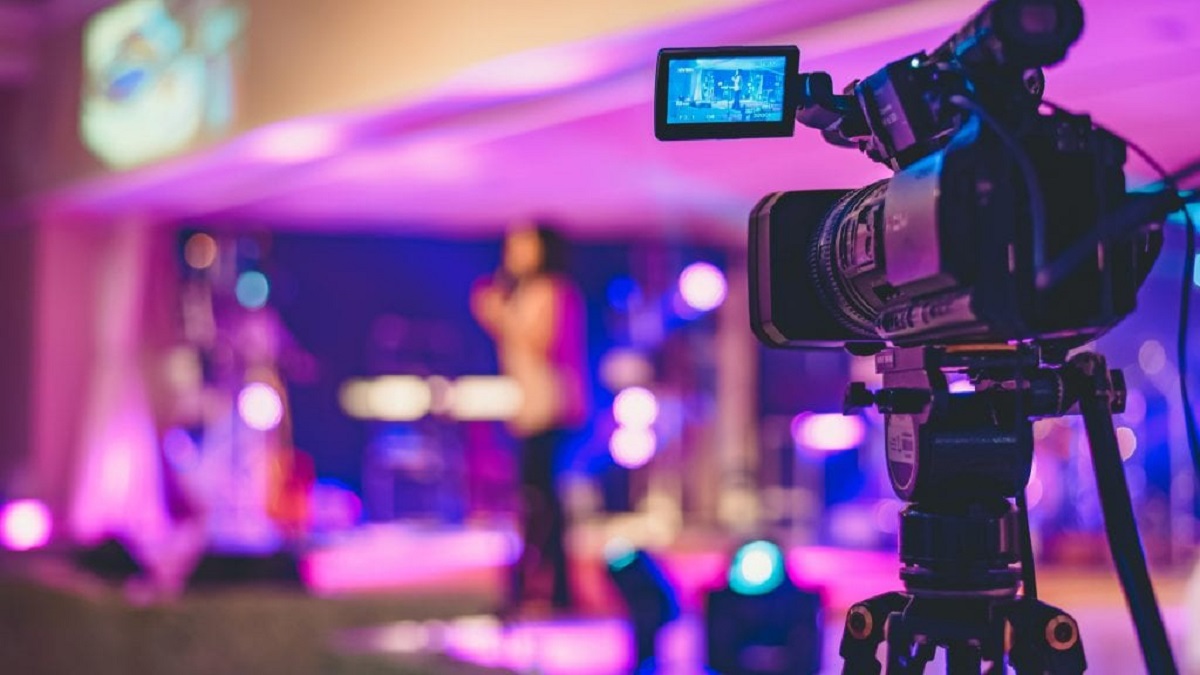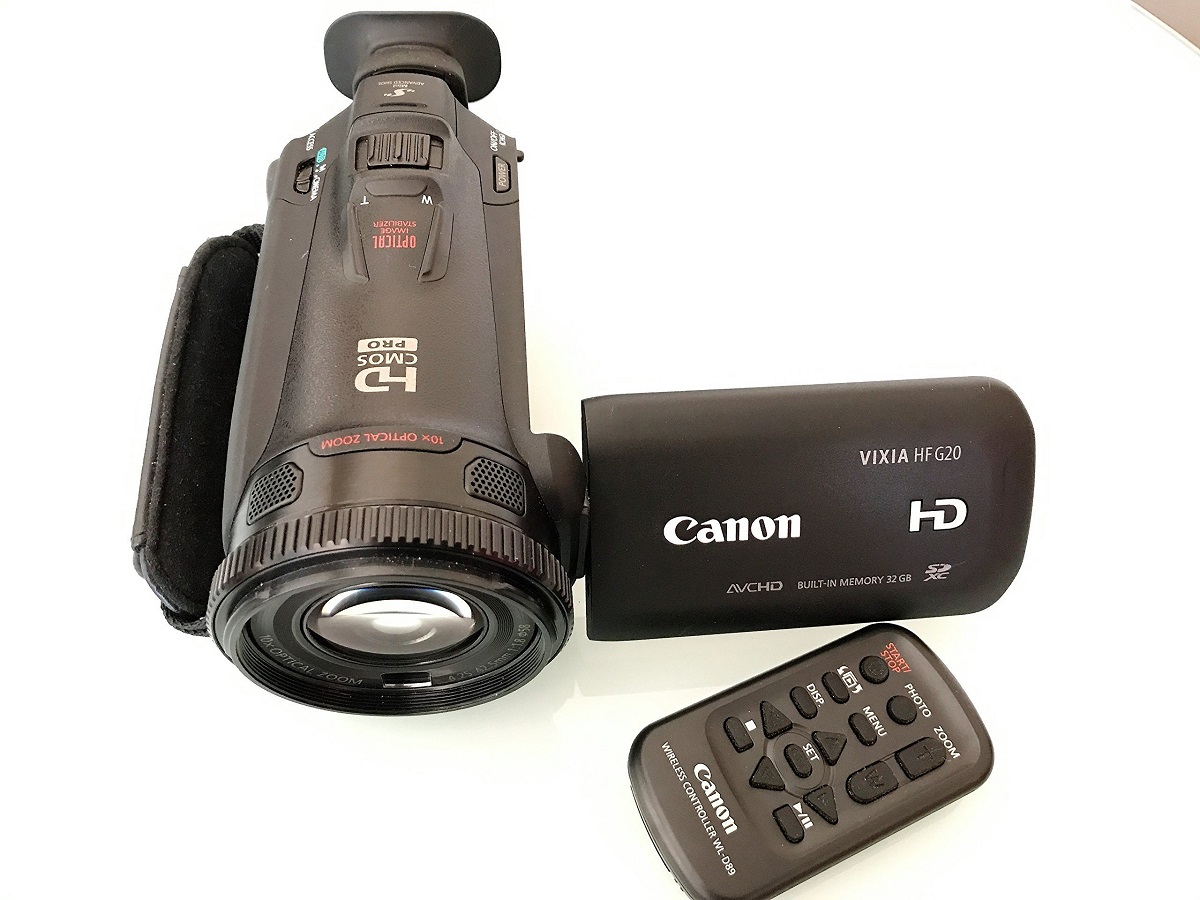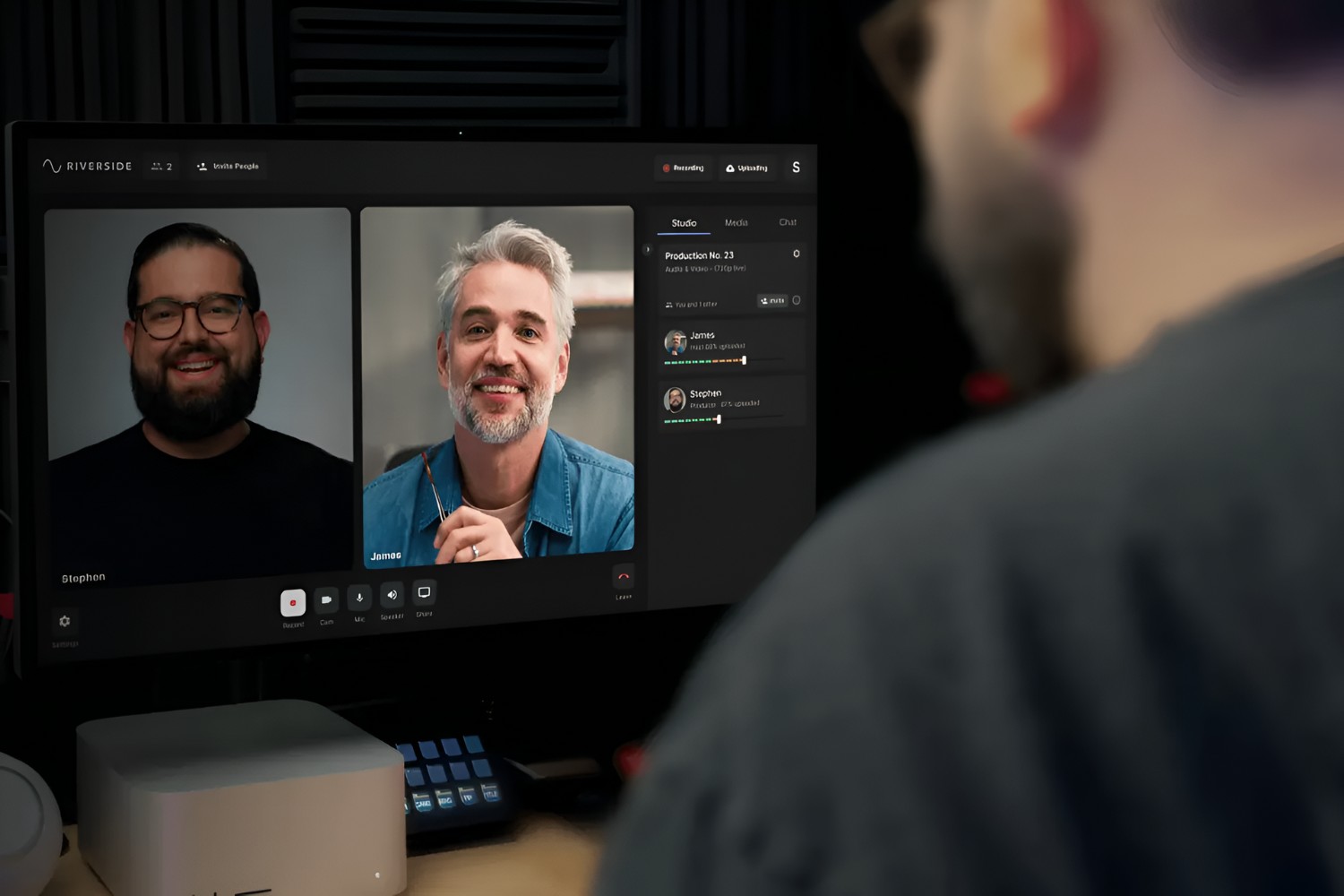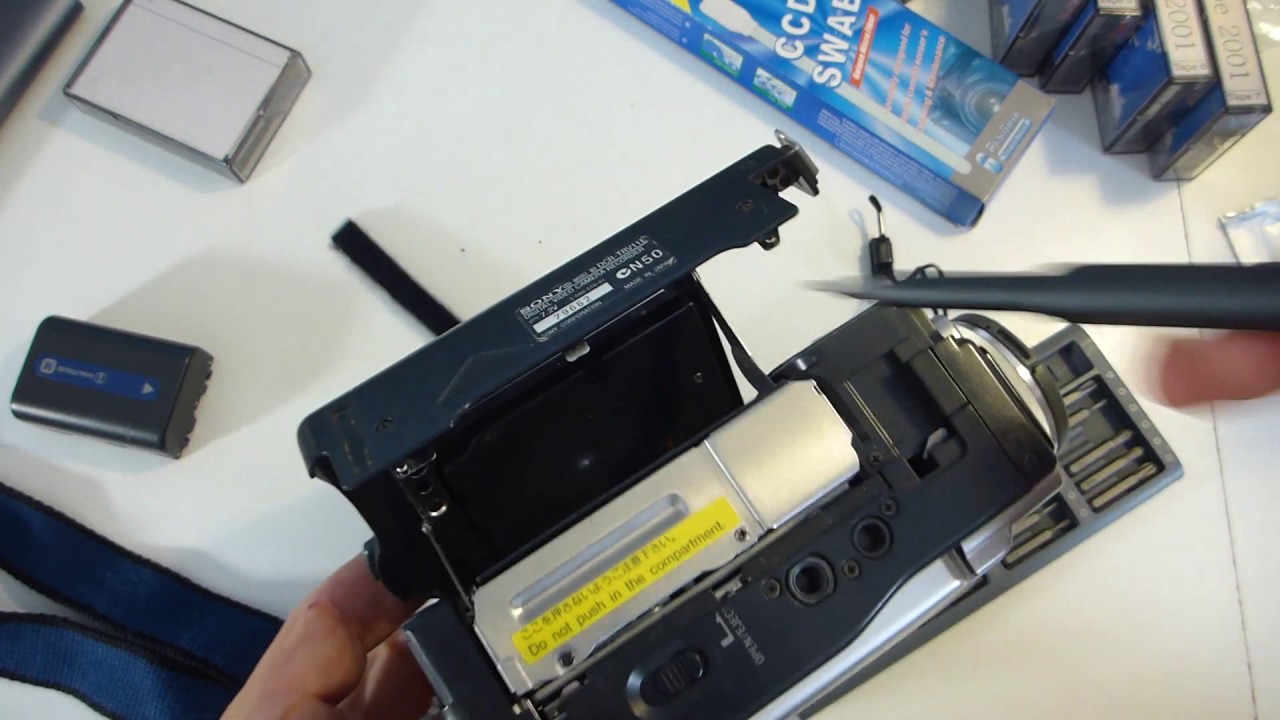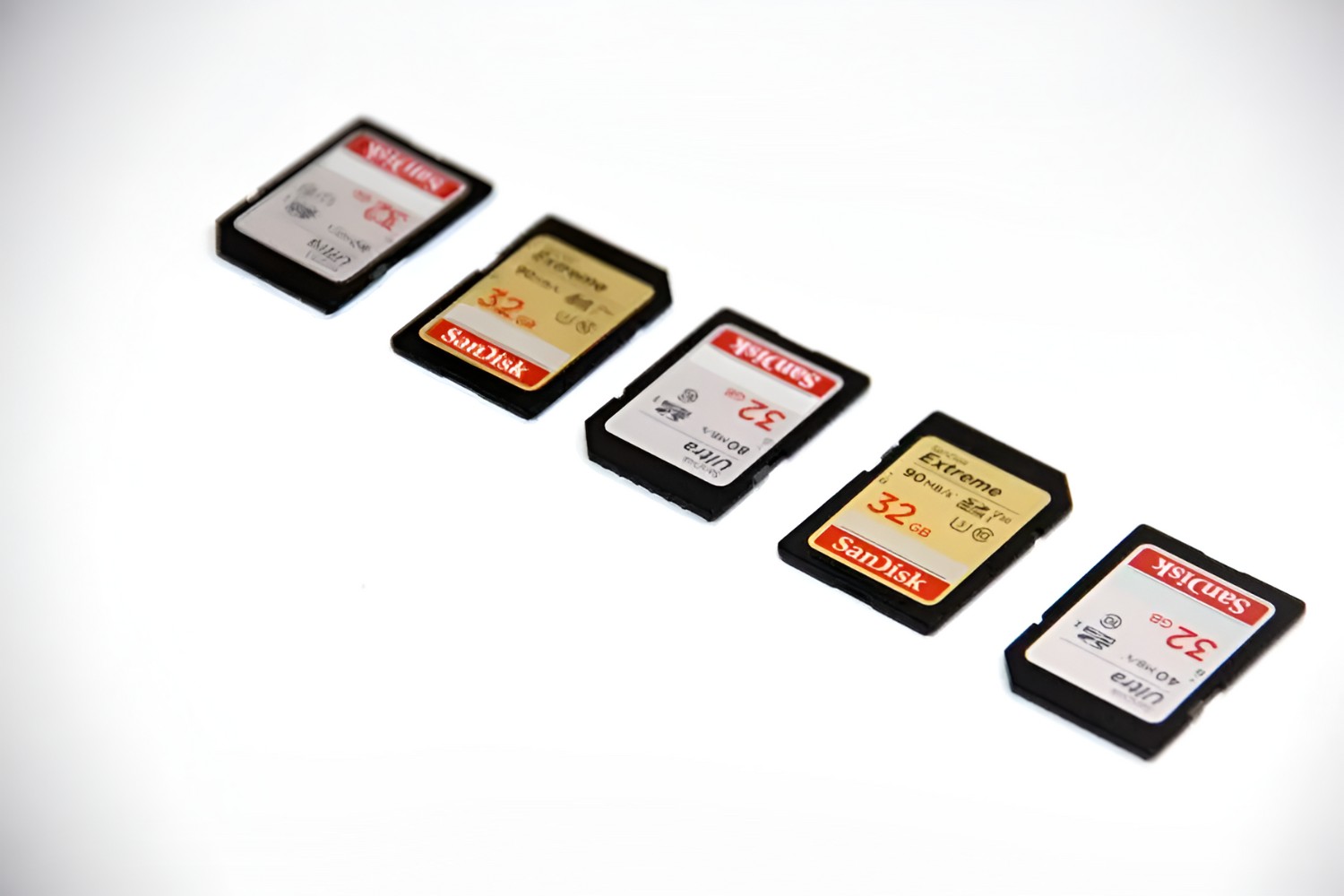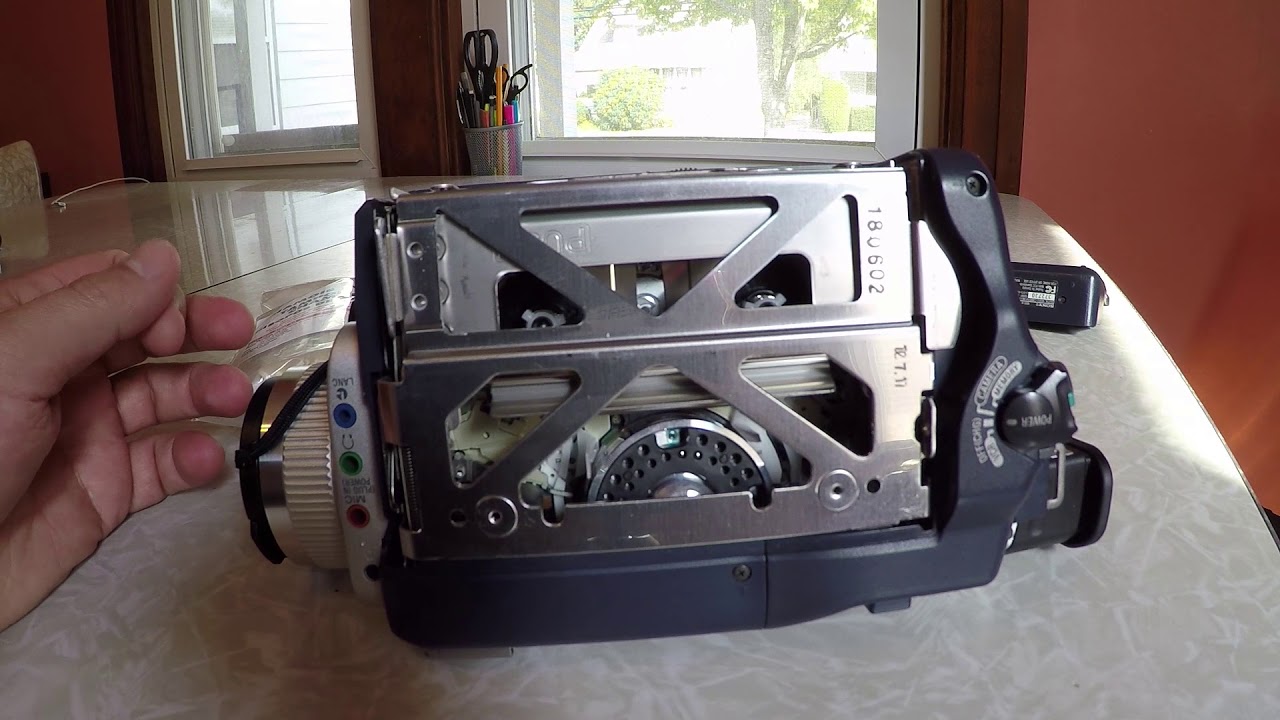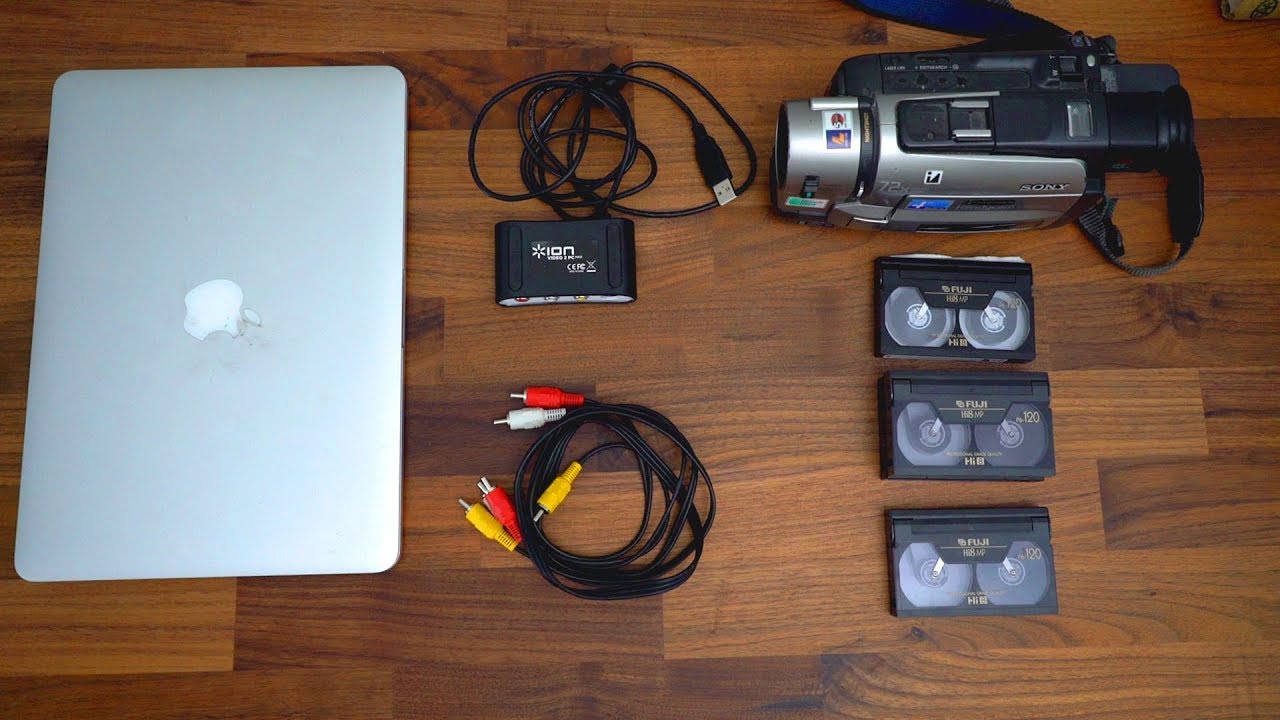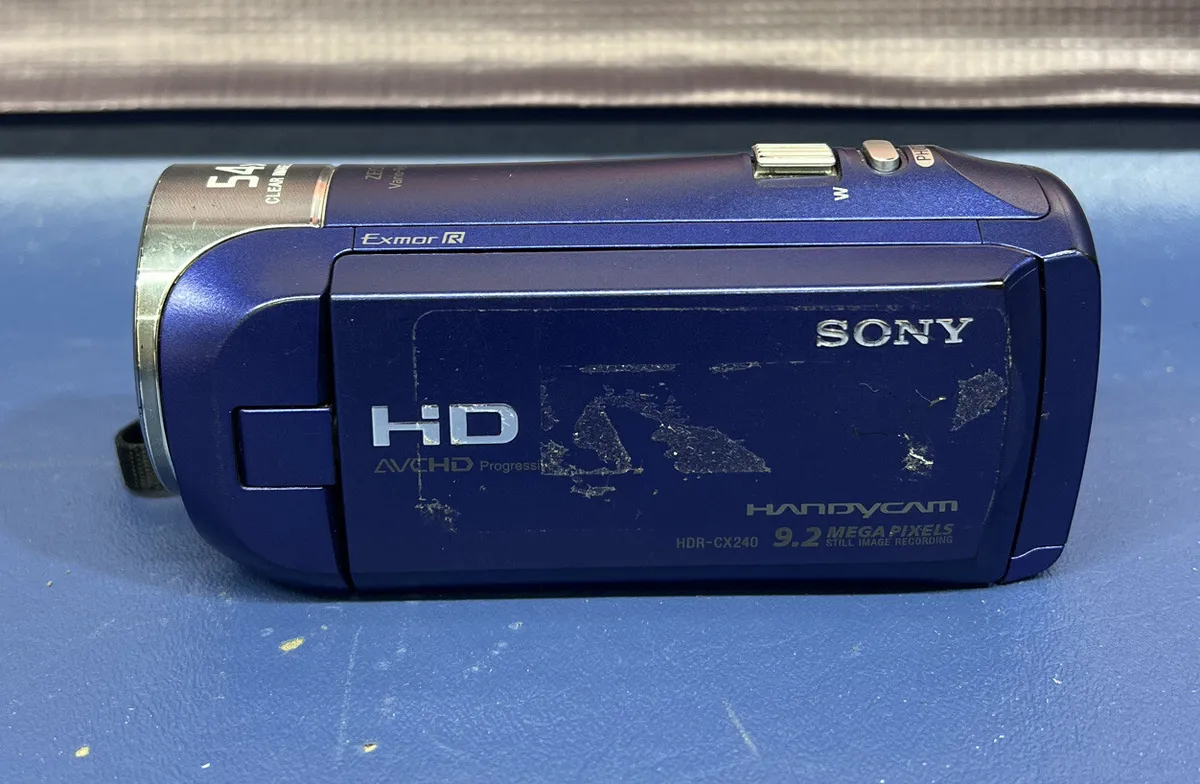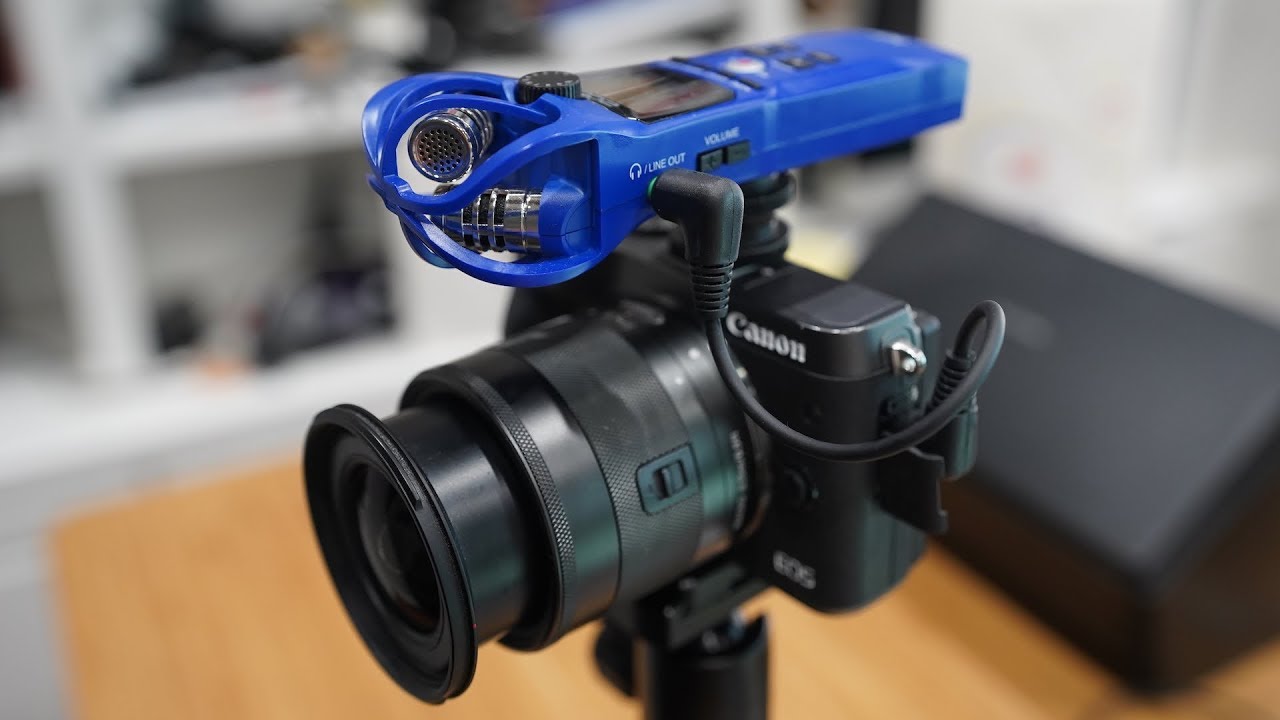Introduction
Understanding the Basics of Camcorder Recording
Welcome to the exciting world of camcorder recording! Whether you’re a budding filmmaker, a vlogger sharing your experiences, or a proud parent capturing precious family moments, knowing how to effectively record with your camcorder can significantly enhance the quality of your videos. In this guide, we’ll walk you through the essential steps to optimize your camcorder recording experience, from selecting the right device to mastering recording techniques.
With the advancements in technology, camcorders have evolved to offer impressive features, making them more accessible and user-friendly than ever before. Understanding the fundamentals of camcorder operation and recording techniques will not only elevate the quality of your footage but also unleash your creativity in storytelling.
Whether you’re using a dedicated camcorder, a digital camera with video capabilities, or a smartphone, the principles of effective recording remain consistent. By mastering these foundational techniques, you’ll be well-equipped to capture memorable moments with clarity, creativity, and precision.
Throughout this guide, we’ll delve into the intricacies of choosing the right camcorder, setting up the device for optimal recording, adjusting camera settings to suit your environment, utilizing external microphones for enhanced audio quality, framing your shots with artistic flair, mastering various recording techniques, and seamlessly transferring and editing your footage. Each step is designed to empower you with the knowledge and skills necessary to produce professional-quality videos.
So, whether you’re an aspiring filmmaker, a passionate storyteller, or simply someone who loves to document life’s adventures, this guide will equip you with the expertise to maximize the potential of your camcorder and create captivating, compelling videos that resonate with your audience.
Choosing the Right Camcorder
When embarking on your journey into the world of video recording, selecting the right camcorder is a pivotal decision that significantly influences the quality and versatility of your footage. With a myriad of options available, ranging from compact handheld camcorders to advanced professional models, understanding your specific recording needs and preferences is essential in making an informed choice.
Factors to Consider:
- Recording Resolution: Assess the resolution capabilities of the camcorder, considering options such as Full HD, 4K, or even higher resolutions for ultra-sharp imagery.
- Portability and Ergonomics: Evaluate the portability and ergonomics of the camcorder, especially if you anticipate shooting on the go or for extended periods.
- Zoom and Focus Capabilities: Examine the optical zoom and autofocus features to ensure they align with your intended shooting scenarios, whether for close-up details or expansive landscapes.
- Low-Light Performance: Consider the camcorder’s performance in low-light conditions, as this can significantly impact the quality of your recordings, especially in indoor or evening settings.
- Audio Input Options: Assess the availability of external microphone inputs for improved audio capture, particularly if you plan to prioritize sound quality in your videos.
- Battery Life and Power Options: Review the battery life and power options, including compatibility with external power sources, to ensure uninterrupted recording sessions.
By carefully evaluating these factors and aligning them with your specific recording requirements, you can narrow down the options and identify the camcorder that best suits your creative vision and practical needs.
Additionally, consider exploring user reviews and expert recommendations to gain insights into the performance, reliability, and overall user experience of the shortlisted camcorders. This firsthand feedback can provide valuable perspectives that complement the technical specifications, aiding in your decision-making process.
Ultimately, the ideal camcorder is one that seamlessly integrates with your creative aspirations, empowers you to explore diverse recording scenarios, and consistently delivers exceptional visual and audio quality. By investing time in researching and understanding the available options, you can confidently select a camcorder that becomes an indispensable tool in realizing your videography ambitions.
Setting Up Your Camcorder
Before embarking on your recording journey, it’s crucial to set up your camcorder correctly to ensure optimal performance and seamless operation. Whether you’re capturing a family vacation, a special event, or creating compelling visual content, the initial setup process lays the foundation for a successful recording session.
Essential Steps for Setting Up Your Camcorder:
- Battery and Power: Begin by ensuring that your camcorder is powered with a fully charged battery or connected to a reliable power source. This step is vital to avoid interruptions during recording and to maintain uninterrupted power supply throughout your session.
- Memory Card: Insert a compatible memory card with sufficient storage capacity into your camcorder. Verify that the memory card is formatted and ready to store your recordings, preventing any unexpected storage issues during crucial moments.
- Adjusting the Strap: Securely fasten the strap provided with your camcorder to ensure a comfortable and secure grip, especially during handheld recording sessions. Properly adjusting the strap minimizes the risk of accidental drops and enhances stability while shooting.
- Lens Cap and Protection: If your camcorder is equipped with a removable lens cap, ensure that it is safely stowed away to prevent obstruction during recording. Additionally, consider attaching a lens filter or hood for added protection against glare and accidental damage to the lens.
- Viewfinder and Display: Familiarize yourself with the viewfinder or LCD display of your camcorder, adjusting the brightness and contrast settings to suit your visual preferences. Clear visibility of the screen is essential for framing shots accurately and monitoring your recordings effectively.
- Audio Setup: If you plan to use an external microphone or audio recording device, ensure that the necessary connections are securely in place, and the audio input settings on your camcorder are configured for optimal sound capture.
By meticulously attending to these setup steps, you establish a conducive environment for seamless recording, allowing you to focus on capturing captivating moments with confidence and precision. A well-prepared setup not only enhances the technical aspects of your recording but also contributes to a smoother and more enjoyable filming experience.
Remember, the setup process is an integral part of the creative journey, laying the groundwork for the successful execution of your recording aspirations. With your camcorder primed and ready, you’re poised to embark on a captivating visual storytelling adventure, fully equipped to bring your unique vision to life.
Adjusting Camera Settings
Mastering the art of adjusting camera settings is pivotal in harnessing the full potential of your camcorder and capturing visually stunning footage. By understanding and optimizing key settings, you can adapt to diverse recording environments, achieve the desired visual effects, and maintain consistent quality across your videos.
Essential Camera Settings to Consider:
- Exposure and White Balance: Familiarize yourself with the exposure controls to regulate the amount of light entering the lens, ensuring balanced and well-exposed footage. Additionally, adjust the white balance settings to accurately capture natural colors under varying lighting conditions.
- Focus and Depth of Field: Experiment with the focus modes to achieve sharp, well-defined subjects within your frame. Understanding depth of field empowers you to create visually engaging compositions, whether emphasizing a specific subject or capturing expansive landscapes with clarity.
- Frame Rate and Resolution: Select the appropriate frame rate and resolution settings based on your creative vision and intended output. Higher frame rates allow for smooth motion capture, while different resolutions offer varying levels of detail and clarity.
- Shutter Speed and Aperture: Explore the impact of shutter speed on motion blur and the creative potential of adjusting aperture settings to control the depth of field, lending a cinematic quality to your recordings.
- Image Stabilization: Activate the image stabilization feature to minimize camera shake and ensure steady, professional-looking footage, particularly during handheld or dynamic recording scenarios.
- Audio Levels and Monitoring: Adjust the audio input levels and utilize monitoring tools to maintain optimal sound quality, whether capturing ambient audio or utilizing external microphones for enhanced clarity.
By immersing yourself in the nuances of these camera settings, you gain the ability to adapt to diverse recording situations, unleash your creative expression, and consistently produce visually captivating videos that resonate with your audience.
Remember, the process of adjusting camera settings is not only a technical endeavor but also an artistic exploration. Each setting presents an opportunity to infuse your recordings with a unique visual character, elevating your storytelling and enriching the viewer’s experience.
Embrace the creative potential of your camcorder’s settings, and allow them to become the palette with which you paint compelling visual narratives, imbuing your videos with depth, emotion, and an unmistakable cinematic allure.
Using External Microphones
Enhancing the audio quality of your recordings is a crucial aspect of producing professional-grade videos. While many camcorders are equipped with built-in microphones, incorporating external microphones can significantly elevate the clarity and richness of your audio, ultimately enhancing the overall production value of your videos.
Benefits of External Microphones:
- Improved Sound Capture: External microphones offer superior sound capture capabilities, ensuring that dialogue, ambient noise, and subtle audio details are faithfully reproduced with exceptional clarity.
- Noise Reduction and Directional Control: Selecting the appropriate external microphone allows you to minimize unwanted background noise and precisely capture audio from specific directions, enhancing the focus and authenticity of your recordings.
- Enhanced Dynamic Range: External microphones expand the dynamic range of your audio, preserving nuanced soundscapes and delivering a more immersive auditory experience for your audience.
- Flexibility and Versatility: By utilizing external microphones, you gain the flexibility to adapt to diverse recording environments and tailor your audio capture to suit the unique demands of each scenario, from intimate interviews to expansive outdoor settings.
Integration and Considerations:
When incorporating external microphones into your recording setup, it’s essential to consider compatibility, connectivity, and positioning. Ensure that the microphone is compatible with your camcorder, and utilize the appropriate connection method, such as XLR or 3.5mm input, to establish a secure and reliable audio link.
Additionally, pay attention to the microphone’s positioning and orientation, aiming to capture the most relevant and pristine audio while minimizing handling noise and extraneous disturbances. Experimenting with different microphone placements and accessories, such as windshields and shock mounts, can further optimize the audio capture process, especially in outdoor or challenging acoustic environments.
By integrating external microphones into your recording arsenal, you empower yourself to craft videos that not only captivate visually but also resonate sonically, immersing your audience in a multi-dimensional sensory experience. The marriage of exceptional audio and compelling visuals creates a harmonious synergy, elevating your storytelling and leaving a lasting impact on your viewers.
Embrace the potential of external microphones as a gateway to unlocking the full sensory spectrum of your recordings, enriching your videos with aural nuances that complement and enhance the visual narrative.
Framing Your Shots
Effective framing is a fundamental aspect of visual storytelling, shaping the composition of your shots and imbuing them with depth, emotion, and narrative significance. Whether you’re capturing breathtaking landscapes, intimate portraits, or dynamic action sequences, mastering the art of framing empowers you to convey your message with clarity and impact.
Key Considerations for Framing:
- Rule of Thirds: Embrace the classic rule of thirds, dividing your frame into a 3×3 grid and positioning key elements along the intersecting points or lines to create visually engaging compositions.
- Leading Lines and Perspective: Leverage leading lines and perspective to guide the viewer’s gaze and create a sense of depth and movement within your shots, drawing attention to focal points and conveying spatial relationships.
- Foreground and Background Elements: Introduce foreground elements to add dimension and context to your compositions, while carefully considering the background to ensure it complements and enhances the visual narrative without detracting from the main subject.
- Balance and Symmetry: Strive for visual balance and symmetry within your frames, whether through the positioning of subjects, the distribution of visual weight, or the use of reflective elements to create harmonious and aesthetically pleasing compositions.
- Dynamic Movement and Framing: Embrace dynamic framing techniques to convey motion and energy within your shots, utilizing techniques such as panning, tilting, and tracking to capture fluid, immersive sequences that captivate and engage your audience.
By internalizing these framing considerations and integrating them into your recording process, you infuse your videos with a visual language that transcends mere imagery, evoking emotion, intrigue, and storytelling prowess.
Remember, framing is not solely about adhering to rigid compositional rules but also about harnessing your creativity and intuition to craft visually arresting scenes that resonate with your audience. Each frame presents an opportunity to convey your unique perspective and imbue your videos with a distinct visual identity.
Embrace the canvas of your viewfinder as a realm of infinite creative possibilities, where every carefully composed shot becomes a brushstroke in the masterpiece of your visual storytelling, capturing moments and emotions that transcend the screen and resonate deeply with your viewers.
Recording Techniques
Mastering a diverse range of recording techniques is essential for elevating the visual impact and storytelling prowess of your videos. Whether you’re capturing dynamic action sequences, intimate interviews, or immersive travel footage, deploying the right techniques empowers you to craft compelling narratives and evoke powerful emotions through your visuals.
Essential Recording Techniques to Explore:
- Dynamic Camera Movements: Experiment with dynamic camera movements, such as panning, tilting, and tracking, to infuse your footage with energy and fluidity, creating captivating visual sequences that draw viewers into the heart of the action.
- Stabilized Handheld Shots: Master the art of stabilized handheld shots, utilizing techniques such as the “invisible tripod” grip or electronic stabilization features to maintain steady, professional-looking footage without the need for bulky support equipment.
- Low-Angle and High-Angle Shots: Embrace the expressive potential of low-angle and high-angle shots to imbue your visuals with unique perspectives, power dynamics, and dramatic impact, adding depth and visual intrigue to your storytelling.
- Slow Motion and Time-Lapse: Explore the creative possibilities of slow-motion and time-lapse recording, capturing the subtle nuances of motion or condensing expansive temporal narratives into visually mesmerizing sequences that transcend real-time constraints.
- Rack Focus and Depth of Field Play: Master the art of rack focus and depth of field manipulation to direct the viewer’s attention, create visual tension, and imbue your shots with cinematic allure, infusing your narratives with a sense of artistry and depth.
- Subject Tracking and Framing: Hone your subject tracking and framing skills, ensuring that your subjects remain crisply in focus and expertly framed within the composition, allowing for seamless visual storytelling and immersive viewer engagement.
By embracing these recording techniques and integrating them into your videography repertoire, you expand your creative toolkit, enabling you to capture moments with finesse, artistry, and emotional resonance.
Remember, recording techniques are not merely technical maneuvers but artistic expressions that allow you to imbue your videos with a unique visual language, conveying emotions, narratives, and sensory experiences that transcend the screen and resonate deeply with your audience.
Embrace the canvas of your viewfinder as a realm of infinite creative possibilities, where every carefully executed technique becomes a brushstroke in the masterpiece of your visual storytelling, capturing moments and emotions that transcend the screen and resonate deeply with your viewers.
Transferring and Editing Your Footage
Once you’ve captured compelling footage with your camcorder, the process of transferring and editing your recordings is where the raw material transforms into a polished, impactful visual narrative. By leveraging the right tools and techniques, you can enhance the quality, coherence, and emotional resonance of your videos, bringing your creative vision to life with precision and artistry.
Efficient Workflow for Transferring and Editing:
- File Management and Backup: Organize your footage systematically, utilizing file naming conventions and folder structures to streamline the editing process and ensure the security of your valuable recordings through regular backups.
- Transfer Methods: Choose reliable transfer methods, such as high-speed data transfer cables or memory card readers, to efficiently import your footage into your editing environment, minimizing transfer times and preserving the integrity of your original files.
- Editing Software Selection: Select a robust and intuitive editing software that aligns with your skill level and creative aspirations, offering a comprehensive suite of tools for seamless video assembly, audio enhancement, visual effects, and color grading.
- Timeline Organization: Structure your editing timeline with precision, arranging your footage, audio tracks, and visual elements in a cohesive manner that aligns with your storytelling objectives, ensuring a smooth and logical flow of your narrative.
- Color Correction and Grading: Explore color correction and grading techniques to enhance the visual aesthetics of your footage, balancing tones, adjusting hues, and infusing your videos with a distinct visual style that complements your narrative tone.
- Audio Enhancement and Mixing: Elevate the auditory impact of your videos by refining audio levels, applying filters, and integrating background music or sound effects to create a rich, immersive sonic environment that enhances the emotional resonance of your storytelling.
By embracing an efficient and creative workflow for transferring and editing your footage, you transform disparate recordings into a cohesive, evocative visual narrative that resonates with your audience on a profound level.
Remember, the editing process is not merely a technical endeavor but a creative journey where your storytelling vision comes to fruition. Each cut, transition, and visual enhancement serves to elevate your narrative, imbuing your videos with emotional depth, visual allure, and a captivating rhythm that captivates and engages your viewers.
Embrace the editing process as a realm of boundless creative potential, where every carefully crafted edit becomes a brushstroke in the masterpiece of your visual storytelling, capturing moments and emotions that resonate deeply with your audience and leave a lasting impression.







